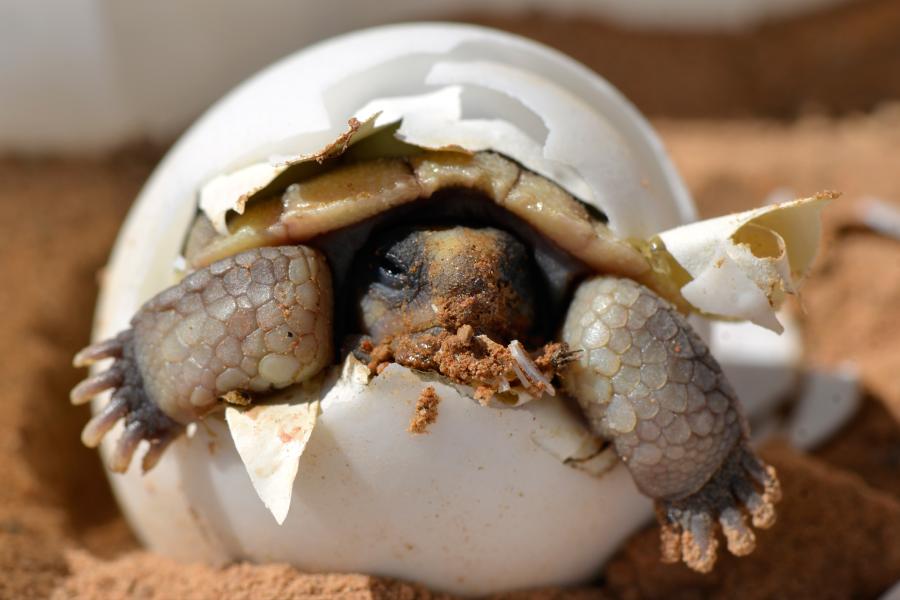Tortoise, ‘Baby Desert Tortoise’, 13-9-2012, K. Kristina Drake

Species: Desert Tortoise, Gopherus agassizii
Location and habitat: Southwestern USA and northwestern Mexico.
Conservation Status: Critically endangered, IUCN Red List
Title: 'Baby Desert Tortoise'
Creator: K. Kristina Drake
Date: 13-9-2012
Medium: Photography
Publisher: U.S. Geological Survey
Copyright: Creative Commons
A tiny Desert tortoise burrows its way out of a ping-pong ball sized egg, to squint out, under artificial lights, at the high-definition lens of a camera held by a scientists working in the Western Ecological Research Center, California, part of the USGS (United States Geological Survey). With a potential lifespan of up to a century, yet also a low survival rate to adulthood, this tiny tortoise is a member of a critically endangered species, threatened by urbanization, habitat destruction, disease, off road vehicles, poaching and vandalism. If it is so lucky as to reach adulthood at around twenty years, the slow growing reptile could weigh between 4-7kgs and be 25 to 36 cm long. Everything about the Desert tortoise is suited -- as its name suggests -- for the desert. It's high domed shell provides extra space for lungs to thermoregulate, and houses a giant urinary bladder, which can store up to 40% of its body weight in water. During dry times, they don't urinate water, but squeeze out a white paste, thus enabling them to survive a year or more without access to water.
The key to their survival in extremely hostile environment -- ground temperatures over 60 °C, as well as freezing winter -- is by having a very strong sense of place. Site fidelity is well crucial, with tortoises having well established home-ranges where they know all the possible sites for food -- mostly grasses, but sometimes also herbs, wildflowers, cacti sprouts and fruit -- water and various minerals. Across their home range, tortoises frequent between 5 and 25 burrows, with up to 20 tortoises living in each one. They spend around 95% of their time these burrows. The specifics of the soil is very important to the tortoises, for they need soils that are soft enough for them to dig through with their strong burrowing arms, yet be strong enough to not collapse. They like alluvial fans, washes and canyons, being very sensitive to soil types, with preferences to sandy loam soils, mixed with the right amount of gravel and clay. Tortoise burrows are surprisingly cosmopolitan places, with them sharing with various mammals -- squirrels, woodrats, peccaries; birds -- burrowing owls and quails; reptiles -- rattlesnakes, gila monsters; and various arthropods -- beetles, spiders and scorpions. Desert tortoises are in grave danger of extinction, hence the USGS's breeding program as photographed here. Since the 1980s, the population of Desert tortoises has declined as much as 90%, with the climatically unstable future looking uncertain for these gentle, cosmopolitan desert shelter builders.
Quotes
No quotes found.
Login to add a quote


